4 min read
ACT and SAT Must-Knows for High Schoolers
We recently published a podcast episode on this topic. This blog post provides a recap of what we covered during the episode. Hi! It’s Abby from...
Free for students & their families
Seamlessly integrated, affordable systems for use across your district.
Career Readiness for 6-8 grade, built to guide and track progress in the early years of career exploration.
Scoir + Common App are integrated for the 2025-26 academic year!
Check out content and practical guides to help inform your enrollment strategies and programs.
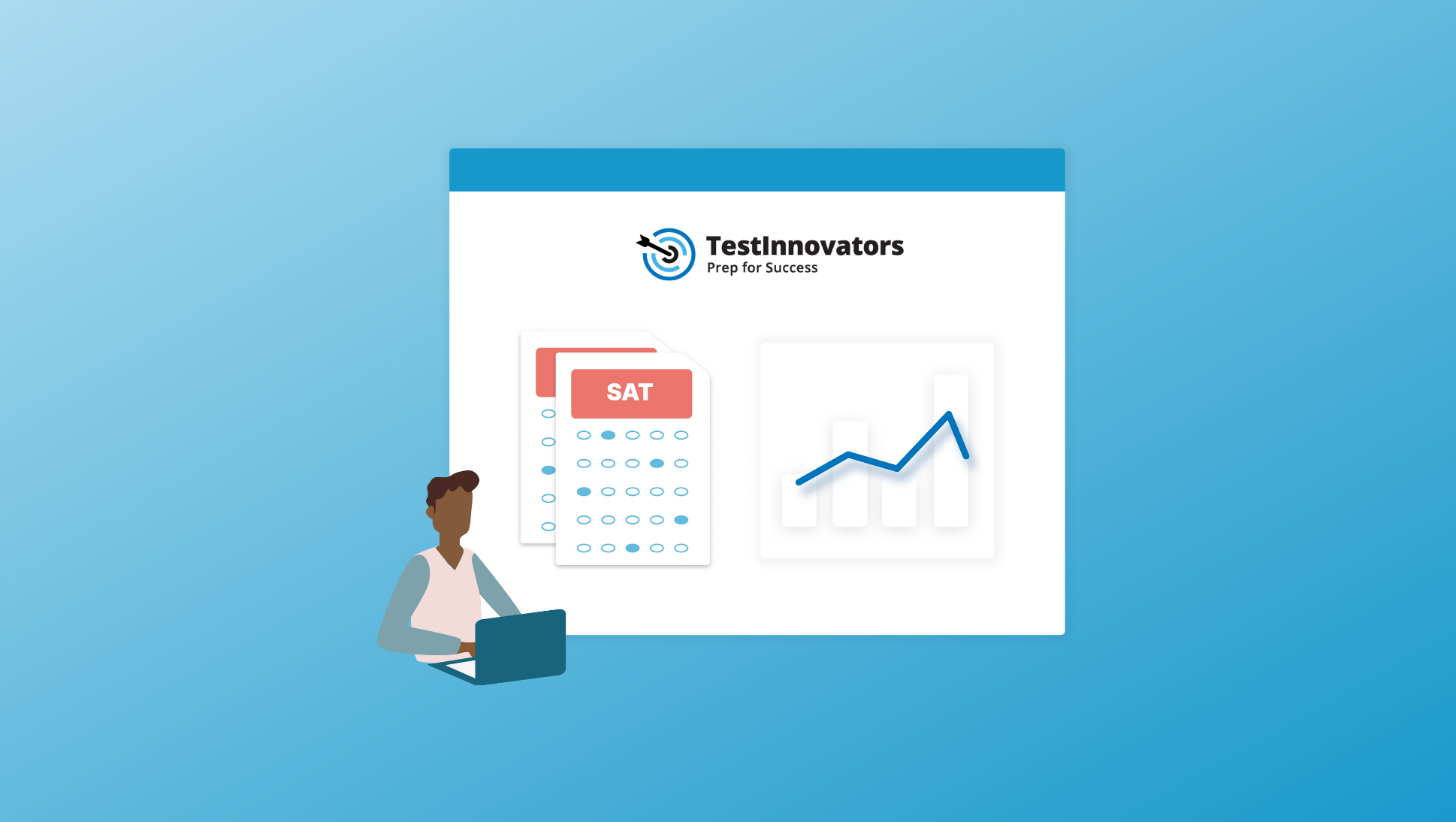
The SAT has been around for nearly 100 years (the first test was administered in 1926!). Since then, the SAT has undergone some changes, but the latest change is by far the most significant.
The SAT is now a computer adaptive test. The digital SAT is much shorter and it has new question types. There’s a lot to learn about the new digital SAT, so let’s explore everything you need to know.
The digital SAT is 2 hours and 14 minutes long, and it has 98 questions. The test has two sections: (1) Reading and Writing and (2) Math. Each section is divided into two modules of equal length.
The structure of the test is as follows:
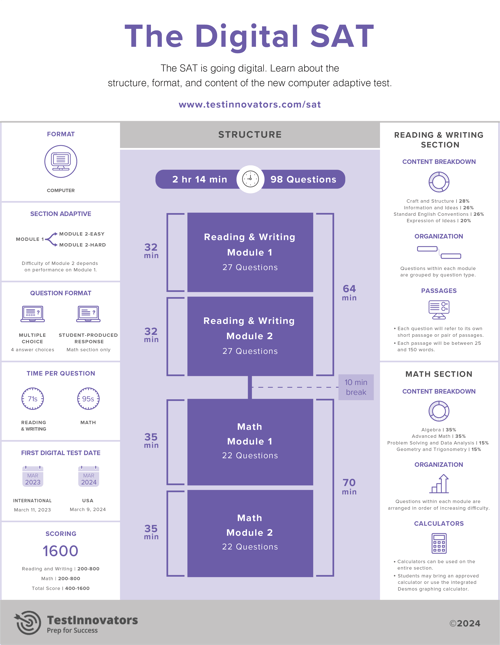
You can download the Digital SAT Infographic here.
The digital SAT is a computer adaptive test, which means that a student’s performance on Module 1 determines the difficulty level of Module 2. Recall that each section—Reading and Writing and Math—consists of two modules.
Here’s how it works:
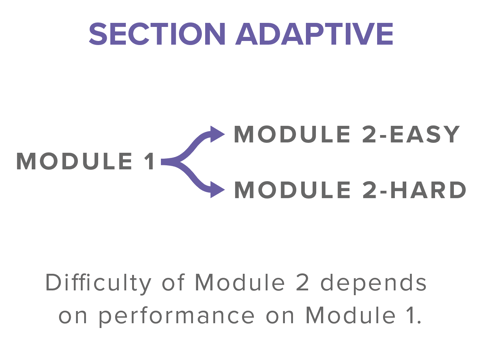
It’s important to note that the questions within each module are pre-determined, so students can move between questions within the current module.
The adaptive element of the digital SAT has a big impact on scoring. Questions are assigned different weights based on their level of difficulty, which means that a correct answer on a difficult question will increase a test-taker’s score more than a correct answer on an easy question. Therefore, students who take the harder Module 2 have a higher score ceiling than students who take the easier Module 2 because they have the opportunity to answer more difficult questions.
The digital SAT is scored on a 1600-point scale. Students receive a score between 200 and 800 for each section. The two section scores are added together for a total score between 400 and 1600.
A number of statistical studies have been conducted to ensure that digital and paper scores can be used side by side. In other words, a score on the digital SAT is statistically equivalent to the same score on the paper SAT. For example, 1250 on the digital SAT is the same as 1250 on the paper SAT.
The entire Reading and Writing section is 64 minutes long and contains 54 multiple-choice questions. It is broken up into two modules, and each module is 32 minutes with 27 questions.
Every question has its own short passage or pair of passages. The passages are between 25 to 150 words and cover a wide range of topics, from science to poetry. Some passages also contain informational tables and graphs.
The Reading and Writing section is divided into the following content domains and testing points:
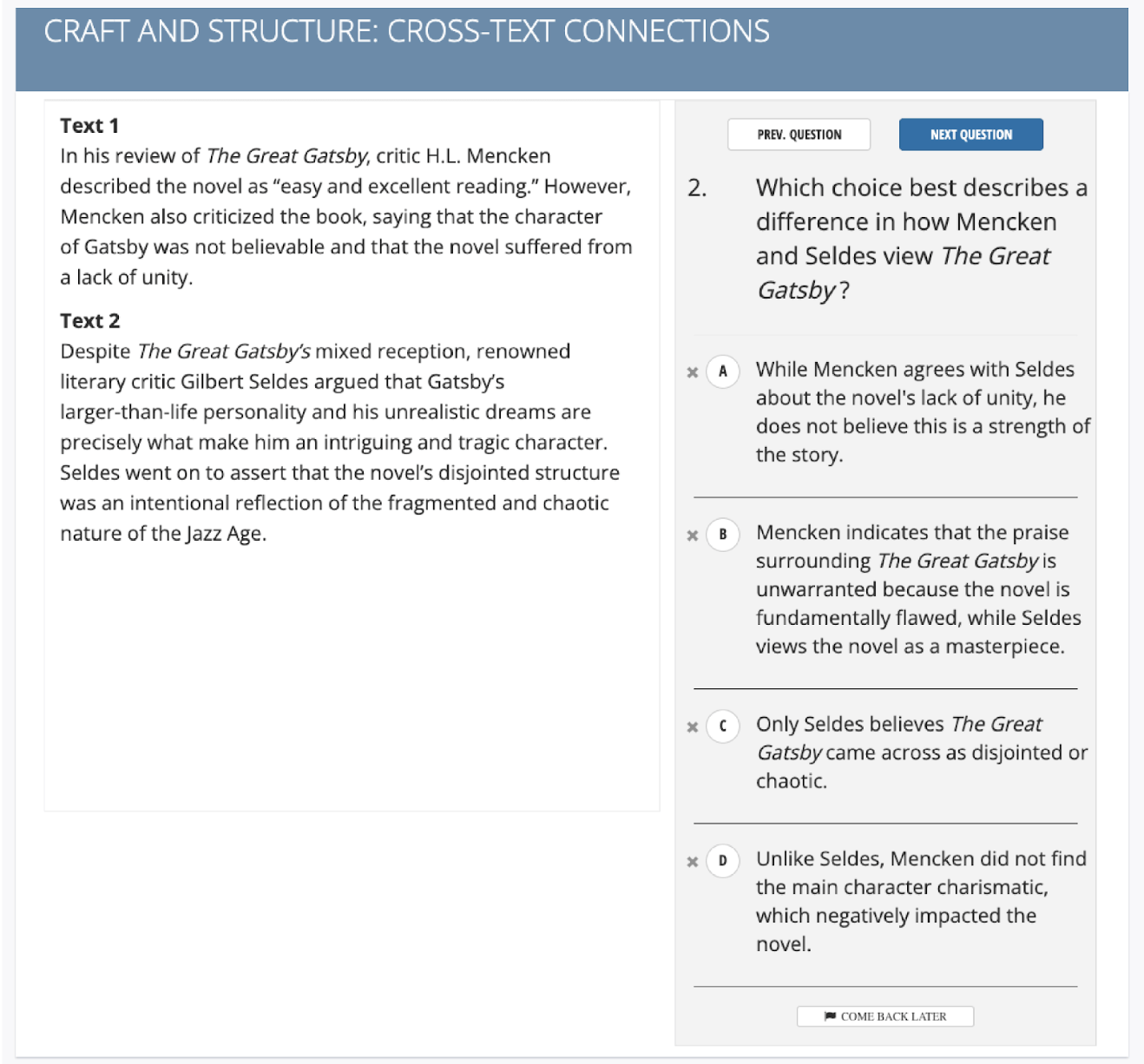
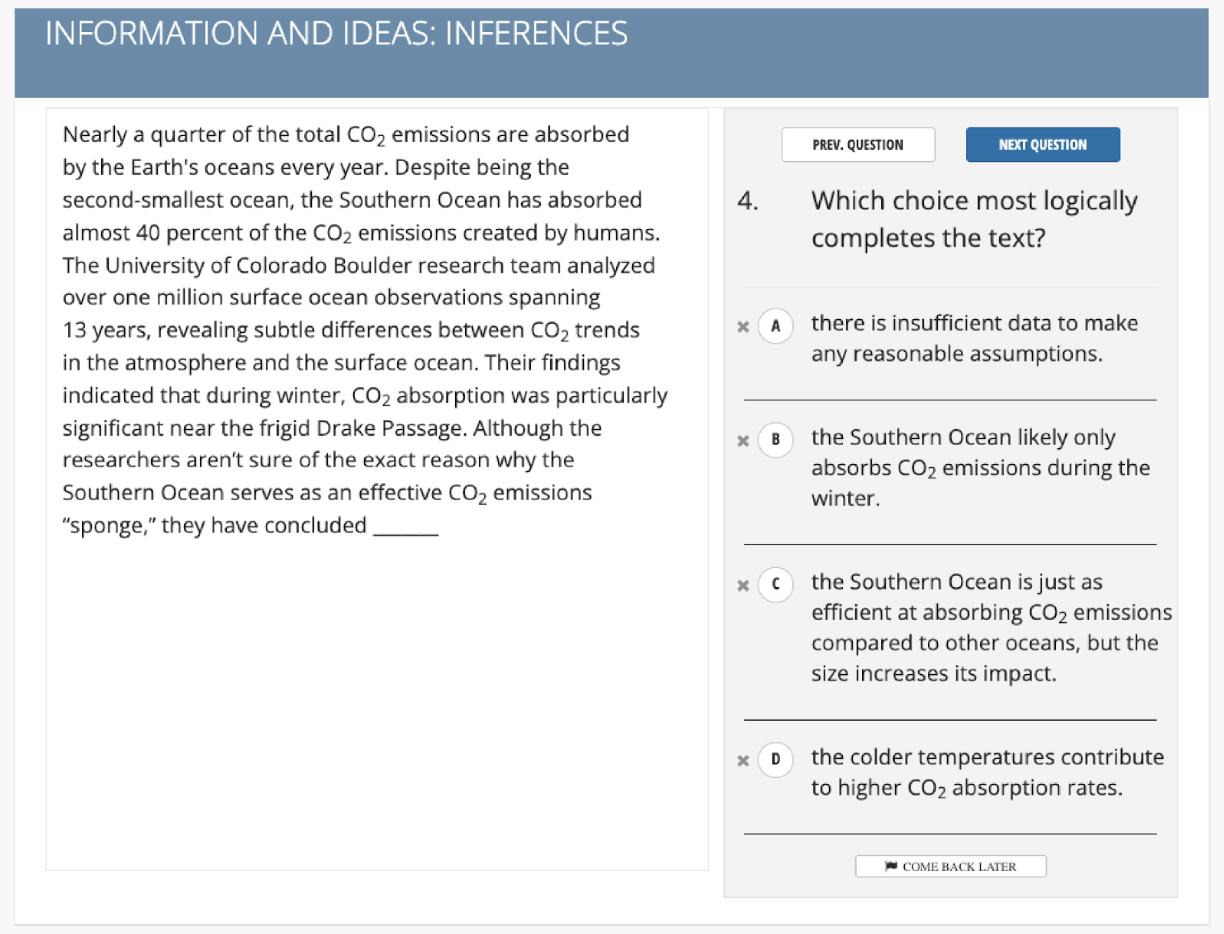
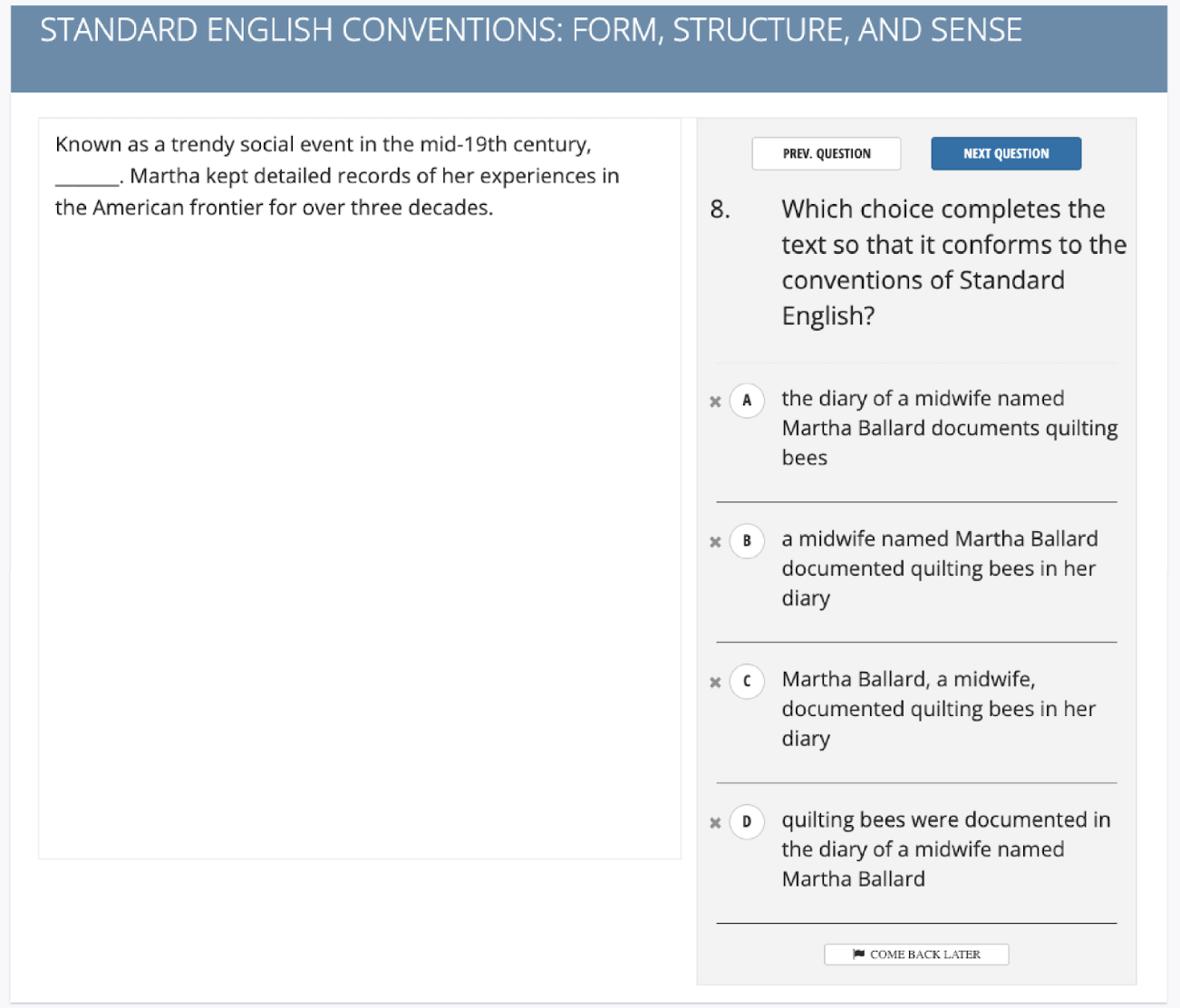
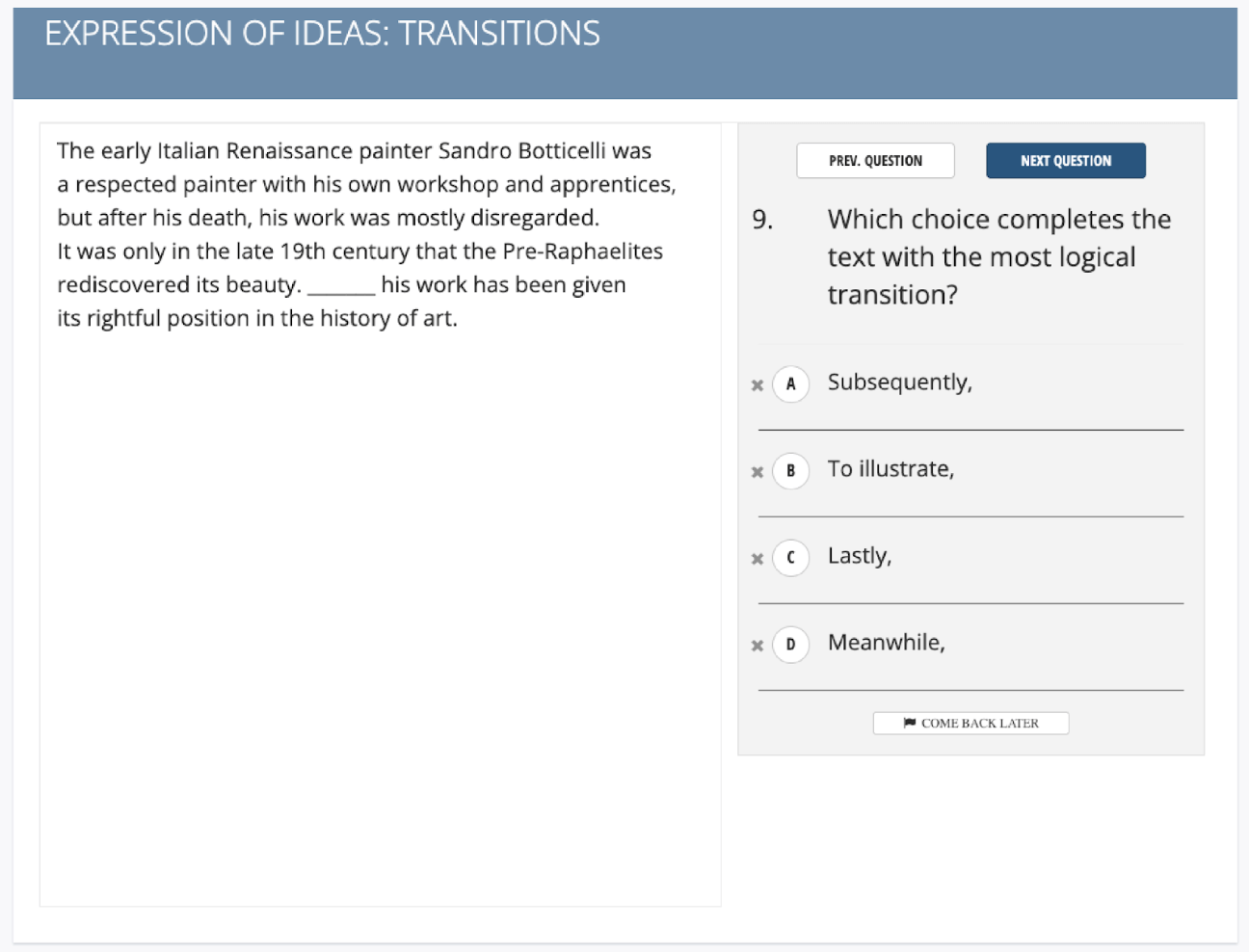
Questions from each of the four content domains appear on both modules. Within each module, questions testing similar skills are grouped together. For example, all of the words in context questions in a module appear consecutively.
The entire Math section is 70 minutes long and has 44 questions. It is divided into two modules, and each module is 35 minutes with 22 questions.
In each module, 75% percent of the questions are multiple-choice (33 questions), and 25% are student-produced response questions (11 questions).
The Math section covers four content domains: (1) algebra, (2) advanced math, (3) problem solving and data analysis, and (4) geometry and trigonometry. These content domains and broken down into the following testing points:
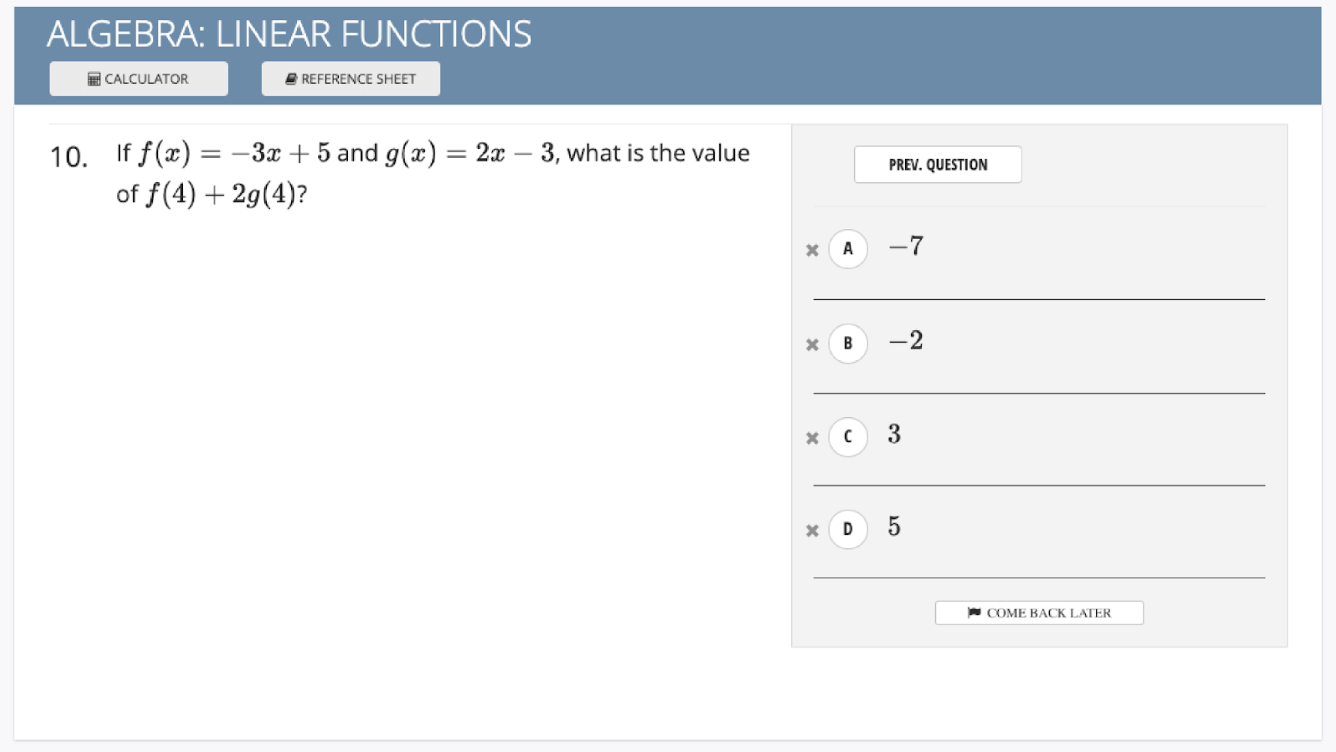
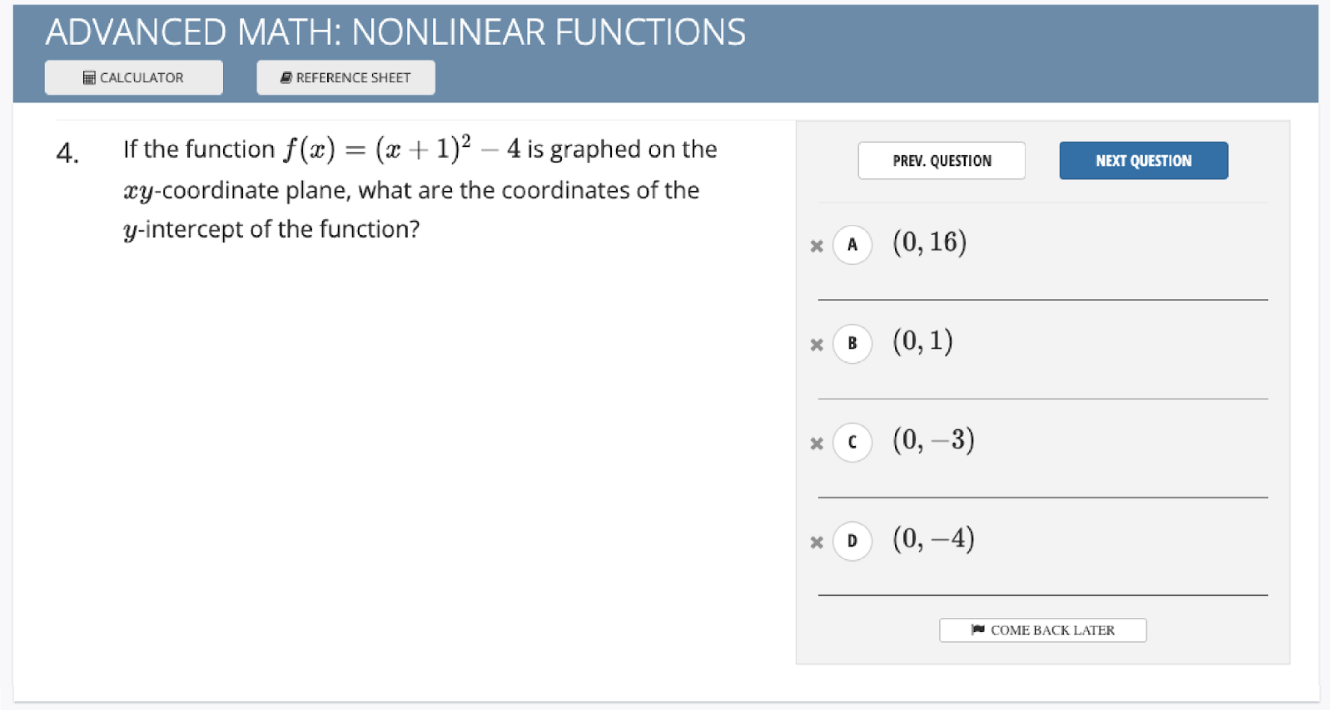
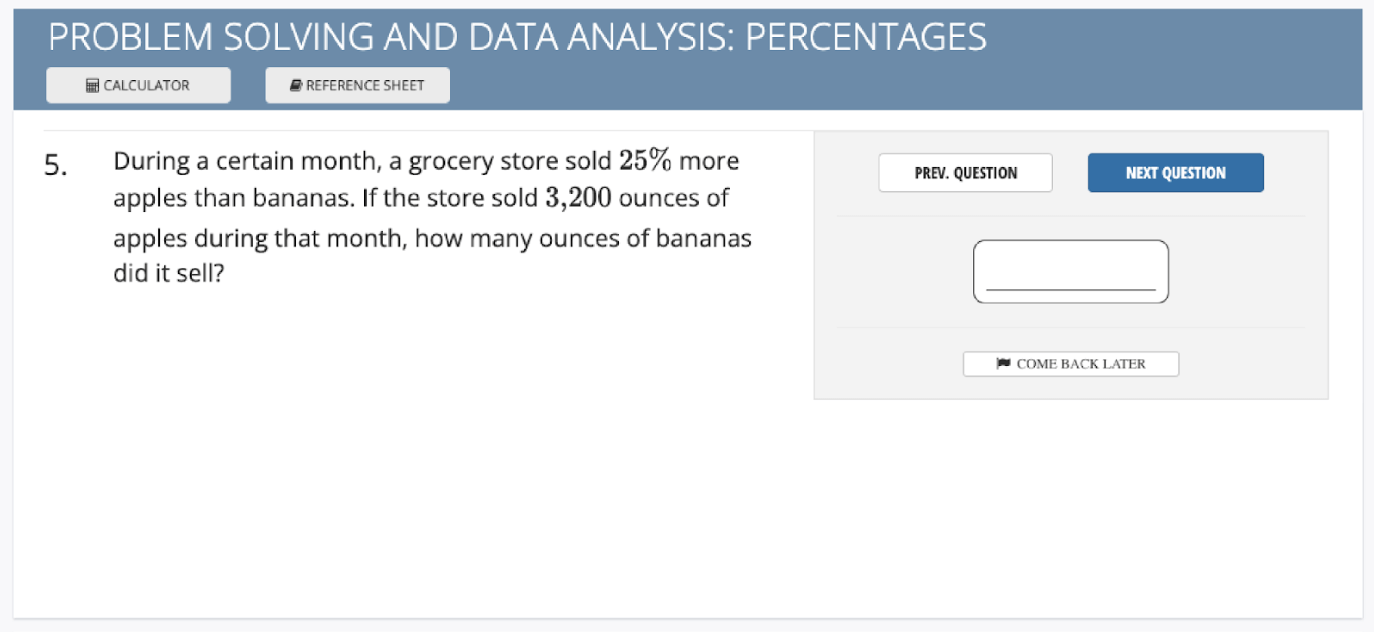
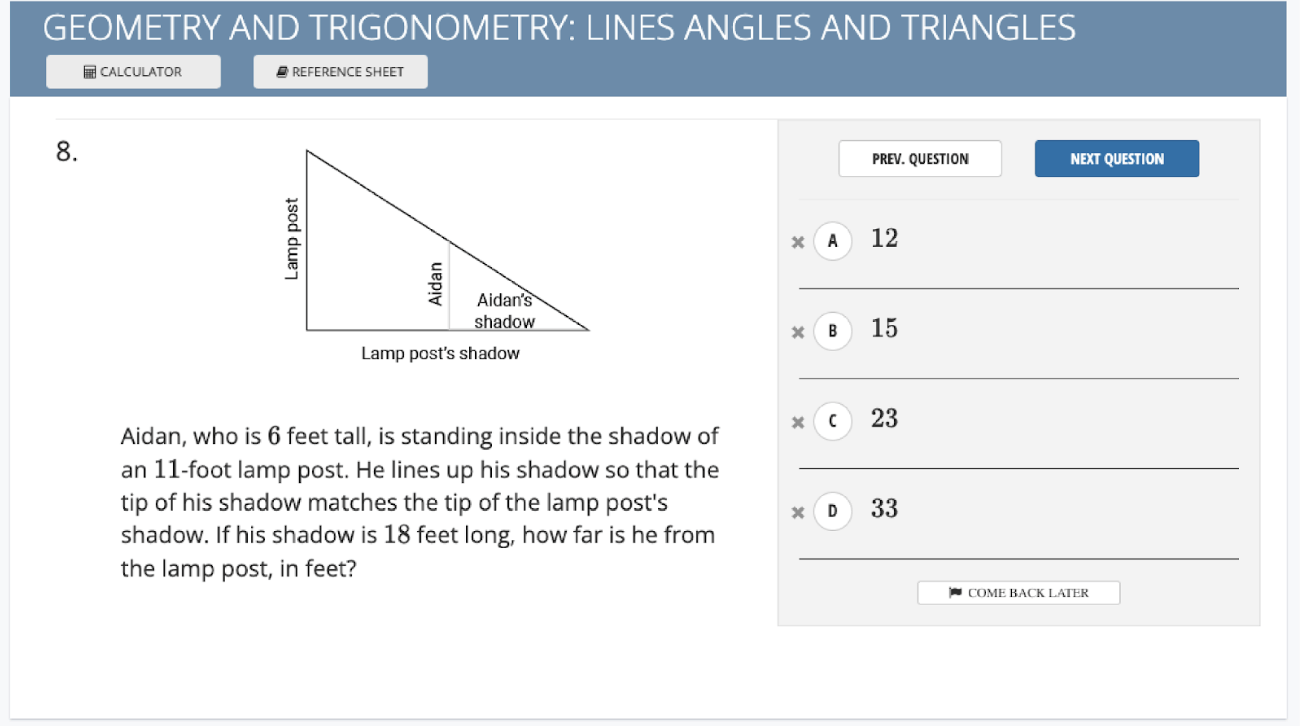
Questions from the four content domains appear on both modules. Each module is arranged by order of difficulty with easier questions towards the beginning and harder questions towards the end.
While the digital SAT is substantially different from the paper-based version, the core principles of preparation remain the same. The crucial distinction is that students should practice with computer-based materials (no more practicing on paper!).
Practicing for the digital SAT can be broken down into three steps.
Start by taking a full-length practice test. Be sure to simulate test-day conditions as much as possible (no cellphones, TV, or other distractions).
Practice tests are the foundation of preparation. Be sure to follow these guidelines:
After completing a practice test, look at your results and take note of areas that need improvement. Go back through the test and review all of the questions that were answered incorrectly and study the answer solutions.
After reviewing the test, practice the areas that need improvement. Review relevant concepts, learn and practice strategies, and complete targeted practice exercises.
After doing additional practice, take another practice test and repeat the process until you reach your target scores.
Practice helps build confidence and mitigate anxiety, allowing you to perform your best on test day.
It’s best to start practicing for the SAT early, so that you have enough time to prepare and to take the test more than once. Ideally, you should start preparing in the spring of sophomore year or the following summer. This allows you to take your first test in the fall or early spring of your junior year.
Many students, however, begin preparing in the fall of their junior year and take their first SAT in the spring of their junior year. This timeline still gives you the opportunity to take the SAT again if needed.
You should aim to finish testing before the start of senior year, so that you can devote your full attention to the college application process.
A note for counselors using Scoir: The College Board Raw Data File for students who took the digital SAT may not be immediately available for download when the scores are released, but the College Board is continuing to offer this file so your team can export and import SAT scores into Scoir.
Scoir and Test Innovators are here to support you. Start practicing for the digital SAT or Learn more about Scoir’s partnership with Test Innovators.
This blog post was provided by Test Innovators, our test prep partner. You can learn more about Test Innovators on our partners page.
This article was originally published on July 11, 2023. It was updated on December 18, 2023 for accuracy and comprehensiveness.

Sara Laszlo is a Marketing Manager at Test Innovators.
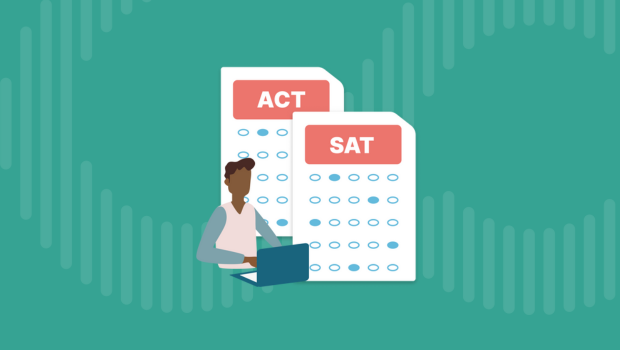
4 min read
We recently published a podcast episode on this topic. This blog post provides a recap of what we covered during the episode. Hi! It’s Abby from...

6 min read
Gaining admission to the college(s) of your choice might weigh heavily on your mind at the moment. The odds are that the prospect of affording...

8 min read
The Free Application for Federal Student Aid (FAFSA), managed by the Department of Education, is the gateway to federal and state financial aid for...